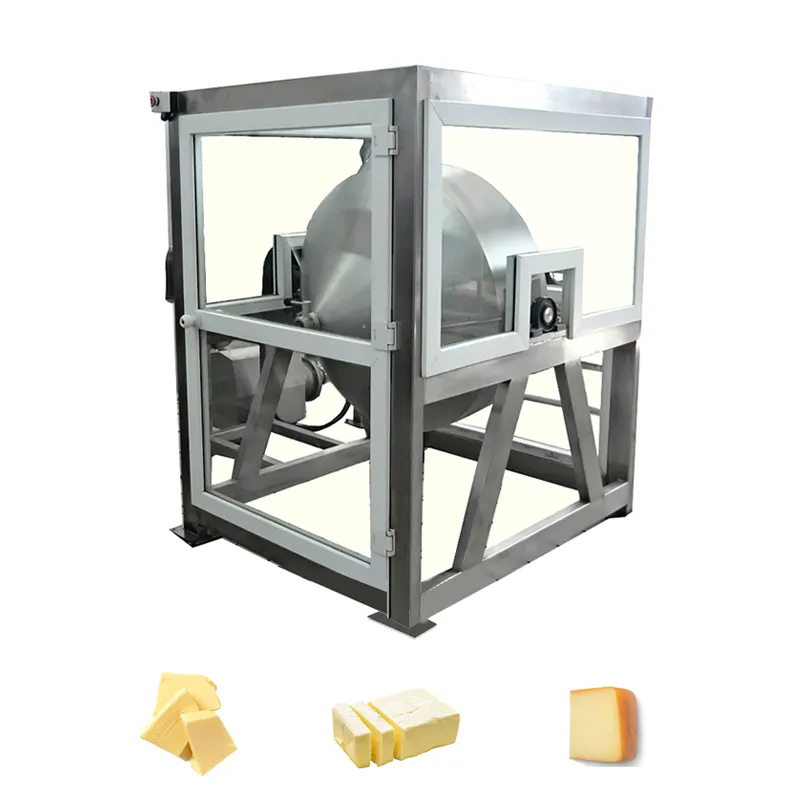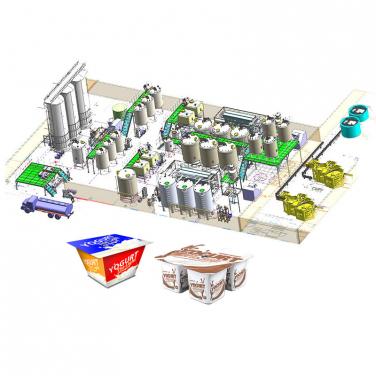
Butter is a magician in delicious food. It can adjust the taste of food. Just add a little butter to the food to make the food more delicious. Butter is also a kind of food material in great demand. How can we carry out the industrial production of butter?
Literally, butter blender is a device that can convert butter into butter. Basically, it stirs the cream until it can be divided into butter and buttermilk. Our butter mixer has a fully enclosed production environment. The machine can work independently through preset procedures. After the work is completed, we can directly obtain the finished butter from the stainless steel tank. The operation is very simple and the production efficiency is very high.
History of butter blenderHistorians have found evidence that butter existed as early as 2000 BC, while butter blenders were produced around 600 BC. This process is quite time-consuming and requires a lot of effort. Fortunately, we now have all kinds of butter blenders, including electric blenders. Now, we make some delicious products with less effort.
Although this is a simple device, we haven't explained how cream turns into butter. What is the science behind this? Well, it's quite simple. During the mixing process, the cream will be stirred vigorously. Agitation destroys the membranes of fat molecules, bringing them together. As large amounts of fat accumulate, they begin to form a network. In addition, the stirring process produces bubbles that capture the liquid and produce foam that separates one substance from another. All this fat is butter, and the liquid separated from it is called buttermilk.
There have been different types of butter mixers in history. Although their working principles are very similar, there are some differences between them.
Plunger agitator
The plunger type butter mixer is the most outstanding type in history. It usually consists of a barrel and a stick with a perforated disc. People must pour milk or cream into the bucket and move the stick up and down in the bucket for 60-90 minutes to produce butter. We are lucky that the technology has been developed enough that we don't have to use the plunger mixer for another hour and a half. Obviously, this type of agitator is no longer used.
Mixing drum
This is another outdated butter mixer. In the 18th century, it was widely used in Europe. The principle is simple: a bucket must be filled with milk or cream. There is a handle on the side of the barrel. The handle can rotate the whole barrel or the paddles in the barrel.
Stirring paddle
This is the most popular mixing method and is now widely used, especially homemade butter. The machine looks like a container with two oars. They spun the cream and turned it into butter.
The agitator can be mechanical or electric. The first has a manual crank that must be rotated manually to unfold. The second is automatic and driven by electricity. The only thing you need to do is pour the cream or milk into a container and wait.
The best temperature to turn cream into butter is 13-15 ℃. However, you can also work at room temperature. It takes longer to stir the cold cream just out of the refrigerator into butter. It takes about 5-7 hours for the butter to mature. In this process, you just need to put the milk in the container of the refrigerator so that the milk won't go bad.
How long does it take to stir the butter? Not that long. 30 minutes usually makes the butter smooth and delicious.
The cream of milk after centrifugation and refined by ripening, stirring and pressing is called butter, also known as butter and white deoiling. Butter is a light yellow solid at room temperature. After heating and melting, it has a unique milk flavor. High quality butter has fragrant smell, fine and uniform tissue, and the cut surface is not permeable.
It can be made from frozen fine butter (raw butter only) or frozen milk (raw butter only). In terms of taste, it can also be divided into primitive butter, semi salt butter and salt butter.
Butter is usually packaged with parchment, aluminum foil / sulfuric acid paper or a composite of aluminum foil and oil proof paper.




